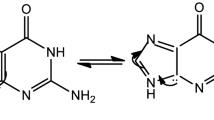Abstract
Two novel sulfonic functionalized coordination polymers (CPs) {[Cd1.5(dimb)(5-sip)(H2O)3]·3H2O}n (1, dimb = 1,4-di(1H-imidazol-1-yl)butane) and [Co2(iptz)(Hiptz)(5-sip)(H2O)]·4H2O (2, Hiptz = 1-(4-(1H-imidazole-5-yl)phenyl)-1H-1,2,4-triazole) were acquired via different metal(II) salts reacting with the mixed ligands containing 1-(4-(1H-imidazole-5-yl)phenyl)-1H-1,2,4-triazole, 1,4-di(1H-imidazol-1-yl)butane and sodium 5-sulfoisophthalate (NaH2sip), respectively. Furthermore, the complex 1 based on Cd(II) could be utilized as the luminescent senor for picric acid (PA) detection in water. In bio-research, compounds 1 and 2 treatment effect on chronic periodontitis was assessed and the specific mechanism was discussed. First of all, the RT-PCR was performed to measure the HmuY and fimA genes relative expression level in P.gingivalis after treated by compounds 1 and 2. Then, the TNF-α and IL-6 content in the fluid of gingival crevicular after compounds treatment was determined with ELISA detection kit.







Similar content being viewed by others
Data Availability
The data used to support the findings of this study are included within the article.
Change history
04 December 2023
This article has been retracted. Please see the Retraction Notice for more detail: https://doi.org/10.1007/s10895-023-03524-5
References
John V, Alqallaf H, De Bedout T (2016) Periodontal disease and systemic diseases: an update for the clinician. J Indiana Dent Assoc 95:16–23
Highfield J (2009) Diagnosis and classification of periodontal disease. Aust Dent J 54:S11–S26
Reddy KV, Nirupama C, Reddy PK, Koppolu P (2020) Alotaibi DH. Effect of iatrogenic factors on periodontal health: An epidemiological study. Saudi Dent J 32:80–85
Niemiec BA (2008) Periodontal disease. Top Companion Anim Med 23:72–80
Han Y, Sheng S, Yang F, Xie Y, Zhao M, Li JR (2015) Size-exclusive and coordination-induced selective dye adsorption in a nanotubular metal–organic framework. J Mater Chem A 3:12804–12809
Pan L, Woodlock EB, Wang X, Zheng C (2000) A new porous three-dimensional lanthanide coordination polymer. Inorg Chem 39:4174–4178
Chen DM, Zhang XJ (2019) Stepwise and hysteretic sorption of CO2 in polycatenated metal-organic frameworks. Cryst Eng Comm 21:4696–4700
Arshad M, Du HL, Javed MS, Maqsood A, Ashraf I, Hussain S, Ma WL, Ran HP (2020) Fabrication, structure, and frequency-dependent electrical and dielectric properties of Sr-doped BaTiO3 ceramics. Ceram Int 46:2238–2246
Chen Z, Ahn H (2020) Item response theory based ensemble in machine learning. Int J Autom Comput 17:621–636
Zhao J, Zhang J, Zhang D, Hu Z, Sun Y (2021) Effect of emerging pollutant fluoxetine on the excess sludge anaerobic digestion. Sci Total Environ 752:141932
Janiak C (2003) Engineering coordination polymers towards applications. Dalt Trans 51:2781–2804
Sui Q, Yuan Y, Yang NN, Li X, Gong T, Gao EQ, Wang L (2017) Coordination-modulated piezochromism in metal-viologen materials. J Mater Chem C 5:12400–12408
Karmakar A, Desai AV, Ghosh SK (2016) Ionic metal-organic frameworks (iMOFs): Design principles and applications. Coord Chem Rev 307:313–341
Xue LP, Li ZH, Zhang T, Cui JJ, Gao Y, Yao JX (2018) Construction of two Zn(ii)/Cd(ii) multifunctional coordination polymers with mixed ligands for catalytic and sensing properties. New J Chem 42:14203–14209
Hou YF, Liu B, Yue KF, Zhou CS, Wang YM, Yan N, Wang YY (2014) Five solvent-induced cadmium coordination polymers (CPs) based on the same mixed ligands. CrystEngComm 16:9560–9567
D’Vries RF, Pena-O’Shea VADL, Hernández ÁB, Snejko N, Gutiérrez-Puebla E, Monge MA (2014) Enhancing metal-organic framework net robustness by successive linker coordination increase: From a hydrogen-bonded two-dimensional supramolecular net to a covalent one keeping the topology. Cryst Growth Des 14:5227–5233
Seco JM, Oyarzabal I, Pérez-Yáñez S, Cepeda J, Rodríguez-Diéguez A (2016) Designing multifunctional 5-cyanoisophthalate-based coordination polymers as single-molecule magnets, adsorbents, and luminescent materials. Inorg Chem 55:11230–11248
Xu Y, Ding F, Liu D, Yang PP, Zhu LL (2018) Syntheses, structures and properties of four Cd(II) coordination polymers induced by the pH regulator. J Mol Struct 1155:72–77
Haldar R, Matsuda R, Kitagawa S, George SJ, Maji TK (2014) Amine-responsive adaptable nanospaces: Fluorescent porous coordination polymer for molecular recognition. Angew Chemie - Int Ed 53:11772–11777
Liu B, Wei L, Li NN, Wu WP, Miao H, Wang YY, Shi QZ (2014) Solvent/temperature and dipyridyl ligands induced diverse coordination polymers based on 3-(2′,5′-dicarboxylphenyl)pyridine. Cryst Growth Des 14:1110–1127
Author information
Authors and Affiliations
Contributions
Lei Mi and Xue Zhang carried out the experiments, and wrote the manuscript; Wenjing Hao contributed to characterizations; Shaui Wang contributed to the experiments and writing related to biological activity study.
Corresponding author
Ethics declarations
Conflict of Interest
The author(s) declare(s) that there is no conflict of interest regarding the publication of this paper.
Additional information
Publisher’s Note
Springer Nature remains neutral with regard to jurisdictional claims in published maps and institutional affiliations.
This article has been retracted. Please see the retraction notice for more detail: https://doi.org/10.1007/s10895-023-03524-5
Electronic supplementary material
ESM 1
(DOCX 473 kb)
Rights and permissions
Springer Nature or its licensor (e.g. a society or other partner) holds exclusive rights to this article under a publishing agreement with the author(s) or other rightsholder(s); author self-archiving of the accepted manuscript version of this article is solely governed by the terms of such publishing agreement and applicable law.
About this article
Cite this article
Mi, L., Zhang, X., Hao, W. et al. RETRACTED ARTICLE: Two Transition Metal Coordination Polymers: Luminescent Sensing Properties and Treatment Effect on Chronic Periodontitis by Reducing IL-6 and TNF-α Content. J Fluoresc 31, 165–173 (2021). https://doi.org/10.1007/s10895-020-02650-8
Received:
Accepted:
Published:
Issue Date:
DOI: https://doi.org/10.1007/s10895-020-02650-8




